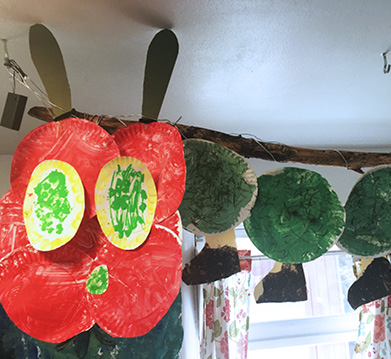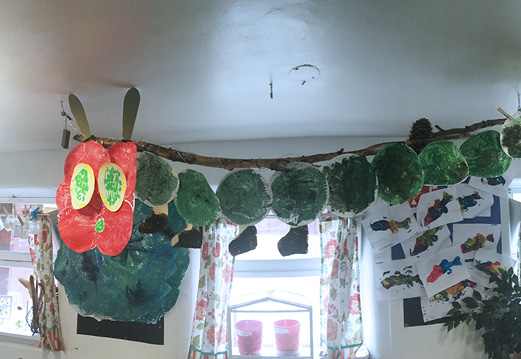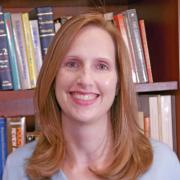Building the Profession: Ensuring Practice Informs Policy

You are here
Vulnerageous. That combination of vulnerable and courageous perfectly describes the up-and-coming leaders I met at NAEYC’s Professional Learning Institute in June, so I was happy to hear the word spread throughout the conference. From a panel with recent graduates of EDvance at San Francisco State University to hallway conversations to an aspiring author who came to the Writing for NAEYC session, I heard that word—vulnerageous—over and over.

It jumped out at me because it captured how so many early childhood professionals—mostly young women of color—are juggling work, college, and family to gain the experience and education they need to become expert educators with strong voices. They’re identifying what they want to learn and finding mentors. They’re owning their strengths and taking on coaching and director positions so they can help others. They’re becoming advocates, realizing that policymakers need to hear their ideas. That’s vulnerageous—and it’s exactly the leadership that the early childhood field needs to become the well-respected and well-compensated profession the current workforce deserves.
This Young Children cluster is dedicated to all the vulnerageous young leaders. They truly are building the profession.
This cluster begins with Rhian Evans Allvin, NAEYC’s chief executive officer. In “Defining Moments in Our Profession: Looking Back, and Looking Forward,” she explains NAEYC’s efforts through Power to the Profession to place educators’ experiences and ideas front and center in the nationwide push to ensure that all early childhood educators have the educational opportunities, professional recognition, and compensation they deserve.
Next, Marica Cox Mitchell and Lauren Hogan use their personal experiences in teaching and policy-making to call for all educators to also be advocates. In “Flipping the Script: Educators Driving Public Policy,” they explain why policy must be shaped by practice and offer several practical ideas for educators who are ready to be vulnerageous and have their ideas heard.
Focusing on individual programs and communities, in “Organizing Early Education for Improvement: Voices from the Field on Essential Supports,” Debra M. Pacchiano, Maureen R. Wagner, and Holly Lewandowski take an in-depth look at what it means to build the profession in each and every center and school. Comparing sites based on children’s outcomes, they found that “high-performing sites had organizational contexts far more supportive of teaching, learning, and family engagement,” and they describe how empowering leaders, teachers, and families can lead to higher quality practices and a better environment for children.
“Creating a Work Environment That Supports Staff Retention” offers a more personal look at a major challenge for the early education profession. After spending time with a director who has succeeded in reducing staff turnover, Nicole R. Hylton and Jennifer A. Vu share many of the little and big steps this director takes to show staff members that they are valued, respected, and appreciated.

Turning to the critical need for more early childhood educators who are men, Kirsten Cole, Jean-Yves Plaisir, Mindi Reich-Shapiro, and Antonio Freitas describe their findings from a two-year study in “Building a Gender-Balanced Workforce: Supporting Male Teachers.” Their work offers insights for recruitment and retention—especially given the bias and isolation that male early educators face.
The rest of this cluster explores building the profession through new avenues for teacher preparation and professional development. In “Applying Knowledge to Practice: How Degree Apprenticeships Support Early Educators,” Alison Lutton offers a case study of an apprenticeship program in Philadelphia that enables early childhood educators to earn associate degrees. Their on-the-job and course-based learning are coordinated, and their wages increase as they meet specific benchmarks. There are mentors and counselors available throughout, and the apprenticeship is part of an aligned career pathway leading to a bachelor’s degree and state teacher licensure.
This deep dive into building the profession ends with a pair of articles on using videos to engage in teacher-directed, individualized professional development. Rachel E. Schachter and Hope K. Gerde show how powerful it can be to watch short clips focused on one interaction or on just a few children. In “Personalized Professional Development: How Teachers Can Use Videos to Improve Their Practice,” several prekindergarten teachers share their reactions to seeing their own teaching. They also reflect on their practice to identify children’s needs (like filling gaps in background knowledge) and to make small shifts to increase engagement (like waiting a little longer for children to share their ideas).
In “Preparing for Evaluation with Video Self-Reflection,” Michelle Grantham-Caston and Cynthia DiCarlo follow one educator as she nervously prepares to be evaluated. Although in the beginning the educator does not welcome the idea of recording her teaching, she finds that regular, video-based self-evaluation and reflection completely shifts her views on formal evaluations. What used to be anxiety-provoking sessions become opportunities to further her self-directed professional growth.
For all the educators who’ve ever thought quietly to themselves, “This would work better if only . . .” this issue is your call to action. Share your ideas. Build your profession. Be vulnerageous.
Is your classroom full of children’s artwork? We would love to feature it in Young Children! See the link at the bottom of the page or email [email protected] for details.
Children in Heather Cedrone’s preschool class used natural materials to create their own version of the very hungry caterpillar.
We’d love to hear from you!
Send your thoughts on this issue, and on topics you’d like to read about in future issues of Young Children, to [email protected].
Would you like to see your children’s artwork featured in these pages? For guidance on submitting print-quality photos (as well as details on permissions and licensing), see NAEYC.org/resources/pubs/authors-photographers/photos.
Lisa Hansel, EdD, is the editor in chief of NAEYC's peer-reviewed journal, Young Children.
